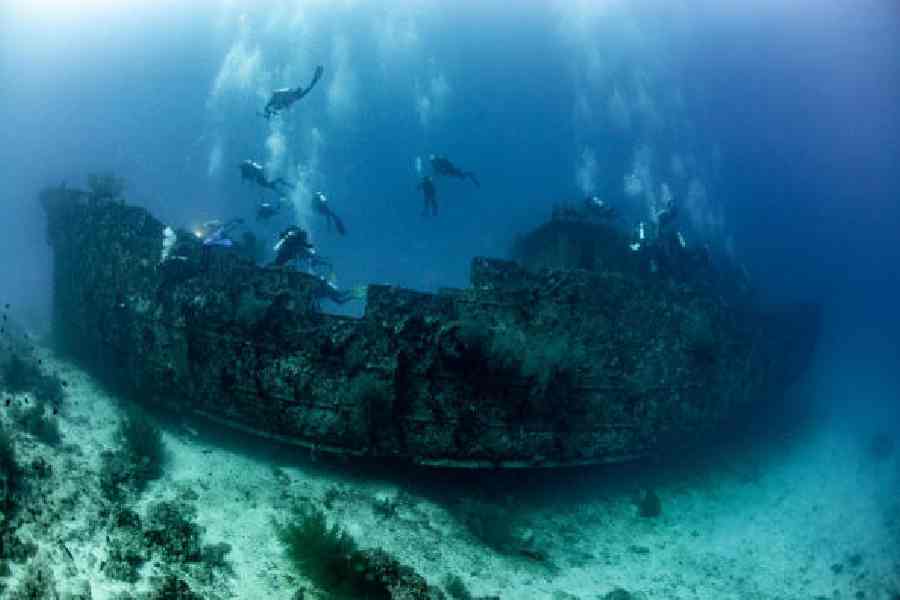Ocean experts have long clashed over whether artefacts from the world’s most famous shipwreck should be retrieved for exhibits that could help people better understand the Titanic tragedy or whether they should be left untouched in the sea’s depths as a monument to the more than 1,500 people who lost their lives. James Cameron, known for his 1997 movie Titanic, sees himself as negotiating a middle path through this complicated and often emotional dispute.
Cameron dived 33 times to the shipwreck from 1995 through 2005, giving him a window into its condition and likely fate. His perspective is timely because the US government recently sought to exert control over the wreck, raising questions about whether a company that has recovered more than 5,500 artefacts will be allowed to gather more.
Cameron’s views are also deeply personal. He often debated the retrievals with Paul-Henri Nargeolet, a French submariner who died in June while descending to the shipwreck in the Titan submersible. Nargeolet also directed underwater research for RMS Titanic, the company that holds the exclusive salvage rights to the ship and its artefacts.
Cameron recently answered questions about his recovery views, the Titanic’s future and the Titan submersible. This conversation has been edited for clarity and brevity.
Q Did you see signs of natural decay during your 10 years of Titanic dives?
We’ve seen significant deterioration to thin-walled structures such as the deckhouse (the uppermost deck above the boat deck) and the forward mast. It was intact (in its fallen position) in 2001 but partially collapsed in 2005. New imaging by the Magellan company in 2022 shows that it has completely collapsed and broken open. However, we’ve not seen any significant deterioration to the vast majority of the wreck, such as the hull plates. Their steel is one and a half inches thick. I believe the plates will still be standing for another two centuries at least.
Q On the Titanic’s artefacts, you describe yourself as a centrist between preservationists such as Robert D. Ballard and salvors such as Nargeolet. How so?
On one hand, I think it’s good to recover artefacts from the debris field. When Titanic broke in two at the surface, it became like two great pinatas. Over square miles, we see plates and wine bottles, suitcases, shoes — things people carried with them, touched and wore.
That humanises the story and reminds us that the tragedy has a human face. So many artefacts have been recovered that poignantly connect us to this history — like the bell from the crow’s nest, which was rung three times by lookout Frederick Fleet when he first spotted the iceberg.
Now, millions of museumgoers can see it with their own eyes. I’ve even rung it myself.
And there are so many examples of Titanic’s elegance — fine china, beaded chandeliers, the cherub statue from the Grand Staircase. It’s the ongoing public interest in these things that keeps the history alive, now, 111 years after the sinking.
A grey area that leaves me torn is whether we should recover artefacts from inside the bow and stern sections. One case I find compelling is the recovery of the Marconi set. This wireless system sent the SOS signal that brought the rescue ship Carpathia to Titanic’s exact coordinates, and arguably saved the lives of over 700 people.
The Titanic’s wireless set was unique, very different from others in its day. I’ve flown my tiny remotely operated vehicles inside to survey the Marconi rooms, so we know where everything is and have done computer reconstructions.
But to actually put that instrument on public display would be very moving for millions of museumgoers. If it could be recovered without any harm done to the outer appearance of the wreck, I’d be in favour, because that area of the ship is deteriorating fast, and within a few years, the Marconi set will be buried deep inside the ruins, unrecoverable.
Q So does that mean anything goes?
Where I personally draw the line is changing the look of the wreck — such as raising its iconic bow (where Jack and Rose stood in the movie) or removing the mighty anchors or taking the bronze telemotor from the bridge where Quartermaster Hitchens desperately spun the ship’s wheel trying to avoid the iceberg. All these recoveries have been discussed by somebody at some point over the last quarter century. I think we shouldn’t take anything from the bow and stern sections that would disfigure them. They should stand as monuments to the tragedy.
Q Do you think the Titan disaster will have an impact on Titanic visitors?
Do I believe it will stop people from wanting to witness Titanic in person? Absolutely not. Human curiosity is a powerful force, and the urge to go and bear witness with one’s own eyes is very strong for some people, myself included. But citizen explorers must be more discerning about who they dive with. Is the sub fully certified by a recognised bureau? What is the safe operating record of the submersible company? These are the kinds of questions they need to ask.
NYTNS











